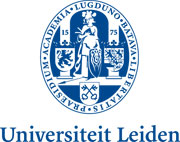 Leiden University (www.leidenuniv.nl/en) is the oldest University in the Netherlands, founded in 1575. The LU has many alliances with Universities all over the world directed on academic excellence. The LU is a broad university with 9 faculties, 17.568 students and 3198 staff. The science faculty has 8 institutes running 9 BSc and 11 MSc programs including biology, physics, and chemistry. The Institute of Biology (IBL) has a strong research on molecular biology, genomics and evolution biology.
Leiden University (www.leidenuniv.nl/en) is the oldest University in the Netherlands, founded in 1575. The LU has many alliances with Universities all over the world directed on academic excellence. The LU is a broad university with 9 faculties, 17.568 students and 3198 staff. The science faculty has 8 institutes running 9 BSc and 11 MSc programs including biology, physics, and chemistry. The Institute of Biology (IBL) has a strong research on molecular biology, genomics and evolution biology.
The eel research group headed by G. van den Thillart has 200 m2 climatised aquarium facilities with temperature controlled seawater, 22 swim tunnels (2 m), one swim gutter (6 m3 for 200 eels) and 2 large tanks (each 3 m3) for reproduction experiments. In addition the IBL has ample lab space for biochemistry and genomics oriented research including GC, HPLC, qRT-PCR machines, and confocal microscopes for molecular cell biology. As of fall 2008 the Science faculty has its main focus on zebrafish genomics and centralised those activities in the Cell Observatory, a collaboration of physics, chemistry and biology.
Tasks inside the project
In WP3- gene sequencing, qRT-PCR, selection criteria for brood stock, natural triggers for maturation; WP4 – ELISAs & bioessays, hormone producing implants; WP 1/5/6 – testing alternative maturation protocols with hormone producing implants.
Relevant experience regarding major tasks
Molecular cell biology, fish biochemistry/ physiology; genomics; eel reproduction; simulated migration of eel; energy metabolism.
Project participants
Dr. Herman P. Spaink is full professor of Molecular Cell Biology at Leiden University. He is the head of a group of 15 research scientists that currently studies the molecular mechanisms controlling cellular recognition mechanisms using zebrafish as the main model system. In addition he is co-founder of the company ZF-screens that aims at the development and valorization of fish cell transplantation technology. Spaink obtained his Ph.D. (cum laude) in 1989 at Leiden University. In 1990 he started a one –year post-doc position at Harvard Medical School at the Department of Biological Chemistry and Molecular Pharmacology, he obtained a five year fellowship from the Royal Netherlands Academy of Arts and Sciences. In 1996 he was appointed as associate professor and in 1998 as full professor in Molecular Cell Biology at Leiden University. He has participates in several EU-projects (ZF-tools, ZF-cancer) and large national grants (Smartmix), published 112 peer-reviewed papers in journals and 86 papers in books and 62 published abstracts and 22 patent applications.
Dr. Guido E.E.J.M. van den Thillart is associate professor of animal physiology at Leiden University. He published over 120 research papers, had joint projects with top scientists and participated in several EU-projects. He obtained many grants, the last few years from the Dutch Research Counsel and the ministry of Agriculture for innovations in fish reproduction technology (2 patents). G. van den Thillart was co-coordinator of a very successful EU project EELREP (2001-2005) and editor of a book (Springer 2009) on “Maturation capacity of European Eel” for Springer. He is coordinator of the working group on eel reproduction for the EAS (European Aquaculture Society). In 2006 2 PhD-theses were finished under his guidance on eel maturation and eel migration (V. van Ginneken and A. Palstra). The research group consists of 2 technicians, 1 postdoc (Palstra), and a variable number of PhD and MSc students.
Collaborating colleagues: Dr. R. Dirks: specialist in neuro-endocrinology of reproduction, genomics and molecular cell biology (ZF-screens BV). Dr. F. Witte: specialist in fish ecomorphology.
Relevant publications
Van Ginneken V & Van den Thillart G (2000). Eel fat stores are enough to reach the Sargasso. Nature 403, 156-157.
Van der Meer D, van den Thillart G, Witte F, de Bakker M, Besser J, Richardson M, Spaink H, Leito J & Bagowski Ch (2005). Gene expression profiling of the long-term adaptive response to hypoxia in the gills of adult zebrafish. Am. J. Physiol. Regul. Integr. Comp. Physiol. 289(5):R1512- 1519.
Palstra A, Cohen E, Niemantsverdriet P, Van Ginneken V & Van den Thillart G (2005). Artificial reproduction of wild European silver eel (Anguilla anguilla L.): clues for higher fertility rates from oocyte maturation. Aquaculture, 249, 533-547
Palstra A, Van Ginneken V, Murk A & Van den Thillart G (2006). Are dioxin-like contaminants responsible for the eel (Anguilla anguilla) drama? Naturwissenschaften 93, 145-148
Palstra A, Schnabel D, Nieveen M, Spaink H, van den Thillart G (2008) Male silver eels mature by swimming. BMC Physiology, 8:14 (10 July 2008).
Palstra AP, Schnabel D, Nieveen MC, Spaink HP, van den Thillart GE. Temporal expression of hepatic estrogen receptor, vitellogenin1 and vitellogenin2 in European silver eels. Gen Comp Endocrinol. (18 sept 2009)
van den Thillart, Guido; Dufour, Sylvie; Rankin, J. Cliff (Eds.) Spawning Migration of the European Eel. Reproduction index, a useful tool for conservation management. Spinger. Fish & Fisheries Series , Vol. 30, p 477 (2009).